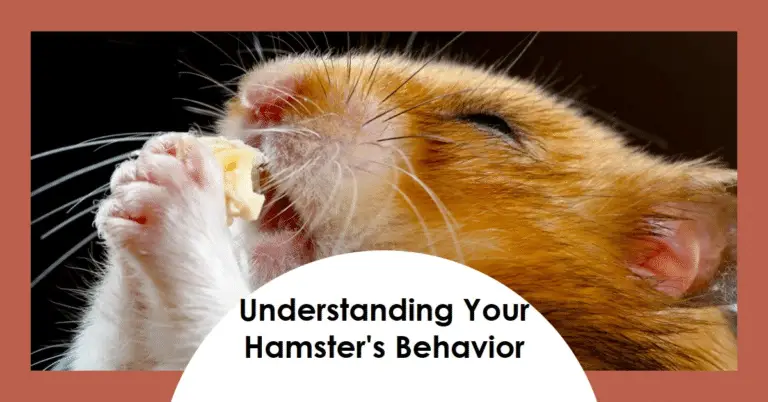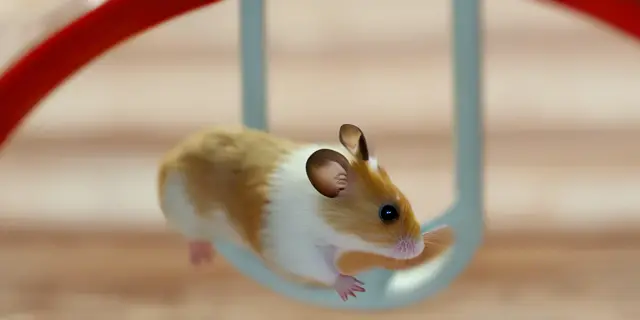Introduction
When it comes to small pets, hamsters and guinea pigs are among the most popular choices for animal lovers. These adorable creatures are known for their cute appearances, playful personalities, and relatively low maintenance requirements. However, many pet owners wonder if it’s safe to keep hamsters and guinea pigs together in the same living space. One of the most pressing concerns is whether a hamster can potentially kill a guinea pig. In this article, we will explore the dynamics of small pet interactions and delve into the factors that determine the compatibility and safety of housing hamsters and guinea pigs together.
Understanding Hamsters and Guinea Pigs
Before we dive into the question of whether a hamster can kill a guinea pig, let’s first take a closer look at the characteristics and behaviors of these two species.
Hamsters: Small but Mighty
Hamsters are small rodents that typically weigh between 0.5 to 10 ounces, depending on the breed. They are known for their round bodies, short tails, and large cheek pouches, which they use to store food. Hamsters are solitary animals by nature and are most active during the night (nocturnal). They have a reputation for being territorial and can display aggressive behavior when they feel threatened or their space is invaded.
| Hamster Breed | Average Size | Temperament |
|---|---|---|
| Syrian Hamster | 5-7 inches | Solitary, can be aggressive |
| Dwarf Hamster | 2-4 inches | Social with same species, but can be territorial |
| Chinese Hamster | 3-5 inches | Solitary, can be nippy |
| Roborovski Hamster | 1-2 inches | Social with same species, but can be skittish |
Guinea Pigs: Gentle Giants
Guinea pigs, also known as cavies, are larger than hamsters, typically weighing between 1.5 to 2.5 pounds. They have a stocky build, short ears, and no tail. Unlike hamsters, guinea pigs are social animals and thrive in the company of their own species. They are most active during the day (diurnal) and are generally known for their gentle and friendly nature.
| Guinea Pig Breed | Average Size | Temperament |
|---|---|---|
| American Guinea Pig | 8-10 inches | Social, gentle, and friendly |
| Abyssinian Guinea Pig | 8-10 inches | Social, curious, and energetic |
| Peruvian Guinea Pig | 10-14 inches | Social, gentle, and laid-back |
| Texel Guinea Pig | 8-10 inches | Social, friendly, and playful |
Factors Affecting Compatibility
When considering whether a hamster can kill a guinea pig, it’s important to understand the factors that influence the compatibility between these two species.
Size Difference
One of the most significant factors to consider is the size difference between hamsters and guinea pigs. Guinea pigs are substantially larger than hamsters, which can create a power imbalance in their interactions. A guinea pig’s size may intimidate a hamster, leading to defensive or aggressive behavior. On the other hand, a hamster’s small size makes it vulnerable to unintentional injuries caused by a guinea pig’s larger body and stronger movements.
Territorial Nature
Hamsters are known for their territorial nature, and they can become aggressive when they feel their space is being invaded. In the wild, hamsters are solitary creatures and defend their burrows and resources from other animals. When placed in a shared living space with a guinea pig, a hamster may perceive the guinea pig as a threat to its territory and react aggressively to assert dominance.
Social Needs
Guinea pigs are social animals that require the company of their own species to thrive. They have a strong need for social interaction, grooming, and physical contact with other guinea pigs. When housed with a solitary creature like a hamster, a guinea pig may experience stress and loneliness, which can lead to behavioral and health issues. Additionally, a guinea pig’s attempts to socialize with a hamster may be met with aggression or avoidance, further exacerbating the incompatibility between the two species.
Activity Levels and Schedules
Hamsters and guinea pigs have different activity levels and schedules. Hamsters are nocturnal, meaning they are most active during the night, while guinea pigs are diurnal and are more active during the day. This difference in sleep-wake cycles can lead to disruptions and stress for both animals when housed together. A hamster’s nighttime activities may disturb a guinea pig’s sleep, while a guinea pig’s daytime movements may agitate a resting hamster.
Risks of Housing Hamsters and Guinea Pigs Together
Now that we understand the factors affecting compatibility, let’s explore the potential risks of housing hamsters and guinea pigs together.
Aggression and Injuries
The most significant risk of housing hamsters and guinea pigs together is the potential for aggression and injuries. Hamsters, with their territorial nature and sharp teeth, can inflict serious bites and wounds on a guinea pig. Even if a hamster does not intend to harm a guinea pig, its smaller size and quick movements can startle a guinea pig, leading to unintentional injuries. Guinea pigs, although generally gentle, may also react defensively if they feel threatened, potentially causing harm to a hamster.
Stress and Anxiety
Housing hamsters and guinea pigs together can lead to chronic stress and anxiety for both animals. The constant presence of an incompatible species can trigger a state of heightened alertness and fear, leading to behavioral changes such as decreased appetite, excessive hiding, and aggression. Prolonged stress can weaken the immune system, making the animals more susceptible to illnesses and health problems.
Transmission of Diseases
Another risk of housing hamsters and guinea pigs together is the potential transmission of diseases. While these two species do not typically share the same specific diseases, they can still pass on bacterial and parasitic infections to each other. For example, hamsters can carry Lymphocytic Choriomeningitis Virus (LCMV), which can be transmitted to guinea pigs and cause severe neurological symptoms. Similarly, guinea pigs can harbor Bordetella bronchiseptica, a bacteria that can cause respiratory infections in hamsters.
Inadequate Living Space
Hamsters and guinea pigs have different space requirements and housing needs. Hamsters are active creatures that require ample space to run, burrow, and explore, while guinea pigs need a spacious enclosure to accommodate their larger size and social needs. When housed together, the limited living space can lead to overcrowding, territorial disputes, and a lack of appropriate resources such as food, water, and hiding spots. Inadequate living conditions can further contribute to stress, aggression, and health issues for both animals.
Alternatives to Housing Hamsters and Guinea Pigs Together
Given the risks and incompatibility of housing hamsters and guinea pigs together, it’s essential to explore alternative living arrangements that prioritize the well-being of both species.
Separate Enclosures
The safest and most recommended option is to house hamsters and guinea pigs in separate enclosures. By providing each species with its own dedicated living space, you can ensure that their specific needs are met and minimize the risks of aggression, stress, and disease transmission. Separate enclosures allow hamsters and guinea pigs to express their natural behaviors and live in an environment tailored to their unique requirements.
Same-Species Companionship
Both hamsters and guinea pigs benefit from the company of their own species. While hamsters are solitary by nature, some breeds, such as dwarf hamsters, can be housed in same-sex pairs or small groups if introduced at a young age. Guinea pigs, being social animals, thrive in the presence of other guinea pigs. Housing them in same-sex pairs or small groups promotes social interaction, reduces stress, and enhances their overall well-being.
Supervised Playtime
If you have both a hamster and a guinea pig and wish to provide them with some form of interaction, supervised playtime can be an option. However, it’s crucial to ensure that the playtime occurs in a neutral, well-controlled environment and is closely monitored at all times. Keep the sessions short and separate the animals at the first sign of aggression or distress. It’s important to note that supervised playtime should never replace the need for separate enclosures and same-species companionship.
Conclusion
In conclusion, while hamsters and guinea pigs are both adorable and popular small pets, they are not compatible living companions. The size difference, territorial nature, social needs, and activity schedules of these two species create a significant risk of aggression, injuries, stress, and disease transmission when housed together. The question of whether a hamster can kill a guinea pig highlights the potential dangers of incompatible pet interactions.
To ensure the well



